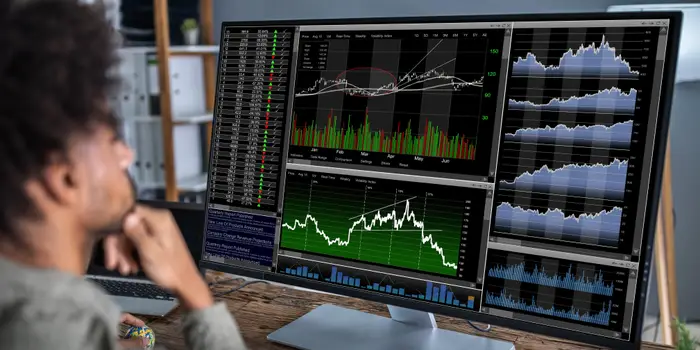Day trading is an intensive and risky activity that requires considerable capital. Investors should only use disposable income or borrowed funds when engaging in this form of investing.
Day traders can rely on technical analysis to generate trading signals with favorable probabilities. Other strategies may include scalping (aiming to make profit from small price changes) and trading the news.
Risks
One of the risks of day trading is losing money if a trade goes awry, whether through lack of planning or making hasty decisions. Even one mistake could cost you your profits and have serious repercussions for both personal and professional lives.
Another risk lies in not being able to exit your position quickly if there’s bad news, especially if you buy on margin – this can result in massive losses and may be even higher if your investment is not sufficiently insured.
Trading regularly can also lead to higher commission costs and thus reduced profit margins, particularly if using margin to leverage long positions or short selling. This can be an enormous setback since more capital will need to be used up in order to generate substantial profits.
Reward
Day trading may tempt many would-be day traders with promises of big gains, yet no guarantee of success can make day trading attractive to some investors. To be successful at day trading one must be comfortable making split-second decisions and monitoring real time securities prices and economic factors for different stocks and industries. Furthermore, investing requires long hours at the computer which can quickly turn into an obsession; no guarantees exist either, making day trading potentially risky if one uses money that they are not prepared to risk losing.
Liquid assets are key for day trading, especially when operating in volatile markets; day traders rely on strong fluctuations to generate profits and leverage margin trades can significantly increase risks and losses; it is therefore best to trade only with disposable income rather than retirement savings or borrowed funds.
Time frame
Day traders must understand the time frame in which stocks move. They must recognize trends and ranges, assess volatility levels and decide if an investment opportunity presents itself.
Day trading involves risk, but can be lucrative for investors with the appropriate knowledge and practice. To be successful at day trading, traders need a reputable broker and high-quality equipment as well as creating a trading plan to help stay focused and disciplined.
An effective trading plan can help reduce portfolio risk and avoid making hasty decisions. A trading plan should include entry and exit points, stop-loss orders and profit targets for each market order and limit order; market orders allow immediate purchase or sale orders while limit orders specify maximum or minimum prices at which trading can occur.
Taxes
Day trading can be highly profitable, yet its tax implications must be carefully understood before engaging. While it can seem complex at first, every trader should understand certain key concepts associated with day trading – for instance the mark-to-market accounting method and its effects on your taxes as well as differences between long-term capital gains and short-term capital gains are essential components.
Additionally, traders should familiarize themselves with all transaction costs they may face, such as brokerage fees and commissions. Furthermore, traders should anticipate that they may need to make estimated tax payments throughout the year.
Traders can deduct investment expenses on their taxes. This can be an enormously advantageous move that reduces their taxable income and may help qualify them for preferable long-term capital gains tax rates. Furthermore, any losses on investments can also be deducted.


